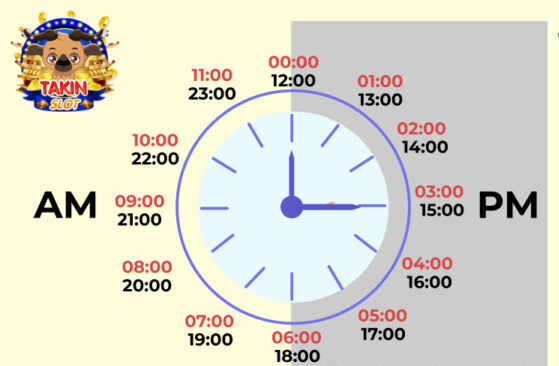Understanding AM: Its Meaning and Full Form
AM Full Form: AM, derived from the Latin term “Ante Meridiem,” refers to the time before noon in the 12-hour clock system. It denotes the period between midnight and midday, encompassing hours from 12:00 a.m. to 11:59 a.m.
Key Points: AM Full Form
- Definition: AM signifies the period before noon, ranging from midnight (12:00 a.m.) to midday (11:59 a.m.).
- Usage: It is utilized to designate time in the morning or forenoon, distinguishing it from the PM (Post Meridiem) period, which denotes afternoon and evening hours.
Additional Information: AM Full Form
- Variations: While AM typically refers to the hours before noon, it may also encompass certain intervals afterward, such as before 3:00 p.m. or between 3:00 p.m. and 10:00 p.m.
- 12-Hour Clock System: In the 12-hour clock system, AM signifies the first half of the day, with PM representing the latter half.
AM in the ADK System:
AM is quantified in the ADK system as follows:
- 12:00 a.m. = 0 a.m. = 12 midnight
- 1:00 a.m. = 1 a.m.
- 10:00 a.m. = 10 a.m.
- 11:00 a.m. = 11 a.m.
- 11:59 a.m. = Just before Noon
Understanding AM and PM: Their Usage and Full Forms
AM Full Form:
AM, or Ante Meridiem, denotes the period of time from midnight (12:00 a.m.) until just before noon (11:59 a.m.). It signifies the morning hours in the 12-hour clock system.
PM Full Form:
PM, or Post Meridiem, refers to the time from noon (12:00 p.m.) until just before midnight (11:59 p.m.). It represents the afternoon and evening hours in the 12-hour clock system.
Am/A-Me Full Form:
Am/A-Me represents a pause, break, or rest in speech or action. When uttered, it indicates a momentary cessation or interruption. It serves as a signal for taking a brief respite.
ASMe Full Form:
ASMe, or A-Me, signifies a close or strict watch over someone or something. It is used to describe individuals who closely monitor or oversee the activities or schedules of others.
Usage: AM Full Form
- AM and PM: Used to differentiate between morning (AM) and afternoon/evening (PM) hours.
- Am/A-Me: Employed to signify a pause or break in speech or action, indicating a moment of rest or interruption.
- ASMe/A-Me: Indicates vigilant observation or supervision, particularly regarding schedules or activities.
Understanding the meanings and usage of AM, PM, Am/A-Me, and ASMe/A-Me facilitates effective communication and coordination in various contexts.
Full Form of AM and PM
AM Full Form:
AM, or Ante Meridiem, signifies the period from midnight to noon, covering the hours between 12:00 AM and 11:59 AM. For instance, if you schedule a meeting for 10:00 AM, it refers to 10:00 AM in the morning.
PM Full Form:
PM, or Post Meridiem, represents the time from noon to midnight, encompassing the hours between 12:00 PM and 11:59 PM. For example, if an event is planned for 3:00 PM, it signifies 3:00 in the afternoon or evening.
Relative Time: SOM (Synchrony of Space) Full Form
SOM, or Synchrony of Space, denotes the period from midnight to noon, aligning with the AM hours. It adheres to the 12-hour clock system before noon. For instance, 01:00 or 1:00 AM represents the first hour after midnight.
Relative Time: TZ (Time Zones) Full Form
TZ, or Time Zones, mirrors the time from midnight to noon, akin to the AM period. It operates within the framework of the 12-hour clock system until noon. For example, 11:59 AM indicates the minute before noon.
Understanding the distinctions between AM and PM, as well as their relative time representations like SOM and TZ, facilitates accurate timekeeping and scheduling across various contexts.
Facts about AM and PM
The 24-hour clock system, including the use of AM and PM to distinguish between morning and afternoon periods, traces back to the Victorian era in England. However, the concept of dividing time into distinct segments predates this period and has ancient origins. Historical records suggest that ancient civilizations like the Egyptians employed a timekeeping system characterized by long days and short nights, spanning over millennia.
The convention of associating AM with the afternoon period and defining noon falls within this historical context. John Wilkins, a British natural philosopher, notably contributed to this convention in his 1662 essay titled “A Dissertation upon the Source and Nature of the Clock.” In this work, Wilkins utilized the term AM to denote the period surrounding noon, emphasizing its significance in the transition from midnight to morning.
In the opening paragraph of his essay, Wilkins eloquently expressed the notion that the heavens reveal themselves as the sun descends into the astrological sign of Scorpio. This celestial phenomenon symbolizes the critical period between midnight and morning, commonly known as the time of noon.
Conclusion: Understanding the AM Full Form
AM, denoting the period from midnight to noon, holds significance in timekeeping traditions associated with the dawn of a new day. Derived from the Latin term “Ante Meridiem,” meaning “before midday,” AM represents the early hours leading up to noon.
In ancient times, before the widespread use of the hour hand in the 15th century, time was often divided into periods marked by significant celestial events. The designation of AM likely served to differentiate this period from the afternoon and evening hours.
While the exact reason for writing AM twice remains uncertain, both “AM” and “A.M.” are synonymous terms conveying the same meaning. Regardless of the written format, it is essential to accurately interpret and utilize time references to ensure clarity and precision in communication.
FAQs about AM Full Form
What does AM stand for?
AM stands for “Ante Meridiem,” which refers to the period from midnight to noon in the 12-hour clock system.
What is the difference between AM and PM?
AM denotes the morning hours before noon, while PM represents the afternoon and evening hours after noon until midnight.
What is the significance of AM and PM in timekeeping?
AM and PM help distinguish between morning and afternoon/evening periods, aiding in scheduling and organizing activities throughout the day.
Are “AM” and “A.M.” interchangeable?
Yes, “AM” and “A.M.” are synonymous terms used to denote the period before noon, indicating the same time range in the 12-hour clock system.
Why is AM written twice in some contexts?
The repetition of “AM” is likely for emphasis or clarity, although both “AM” and “A.M.” serve the same purpose of indicating the period before noon.




